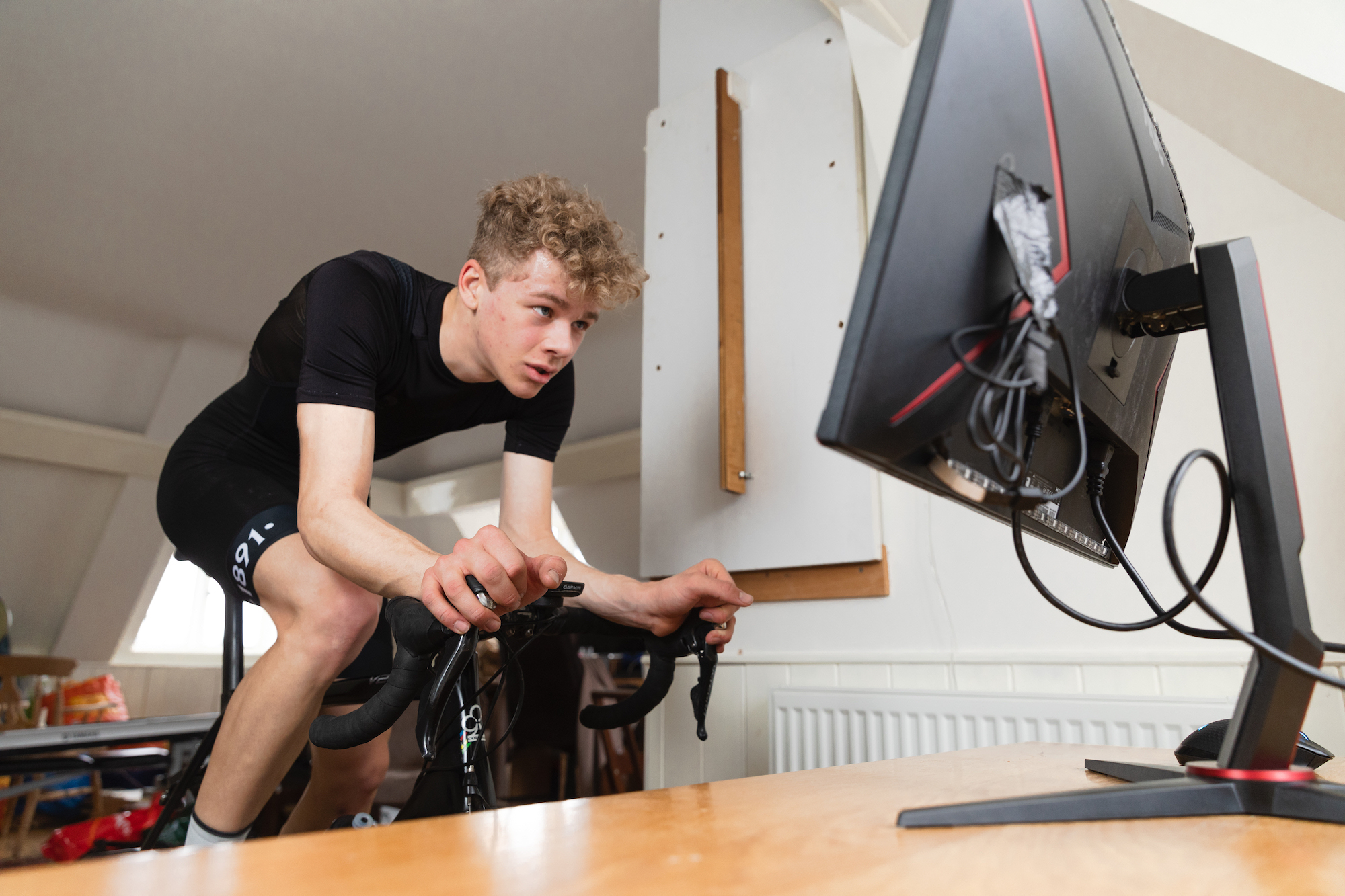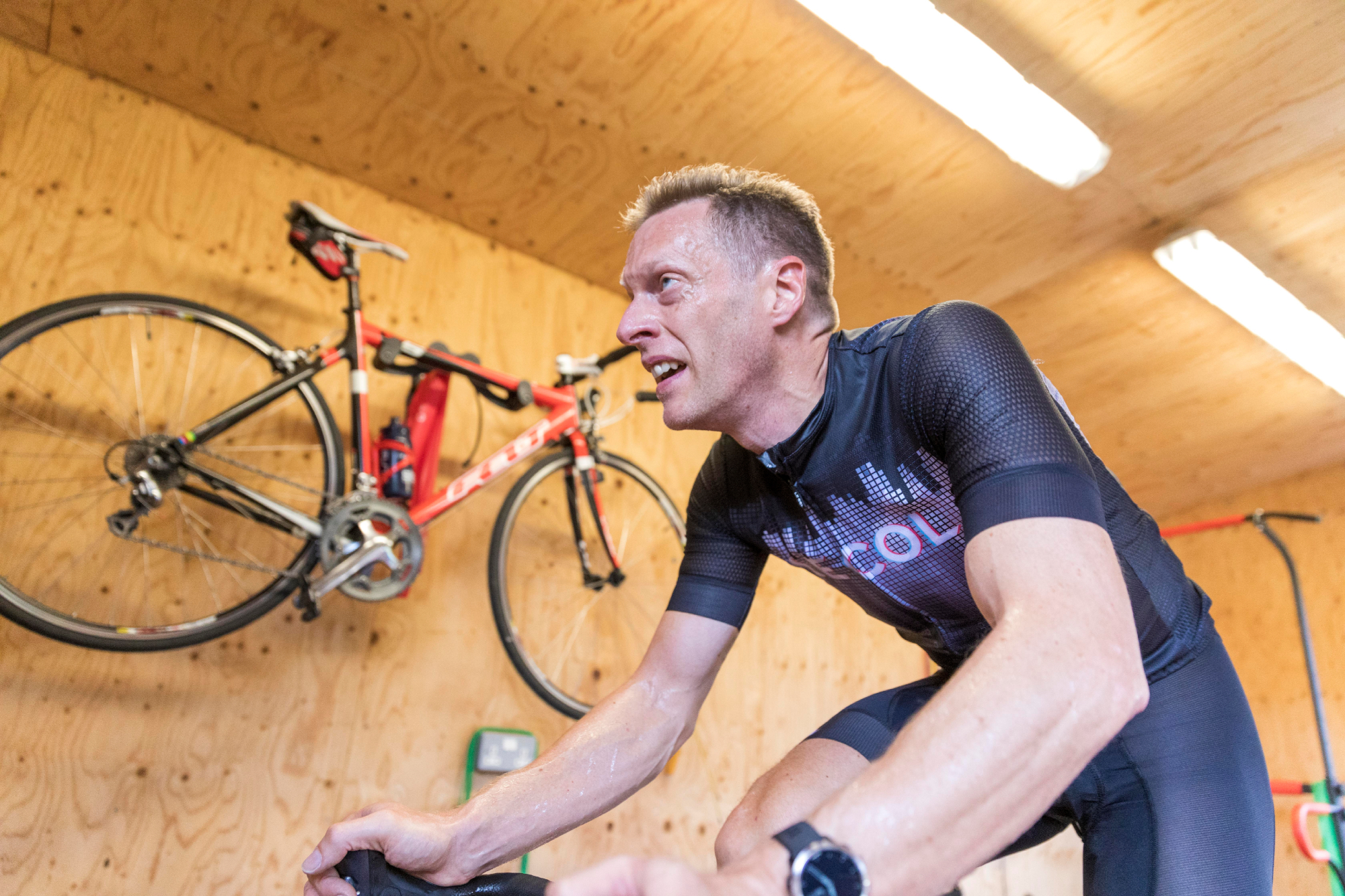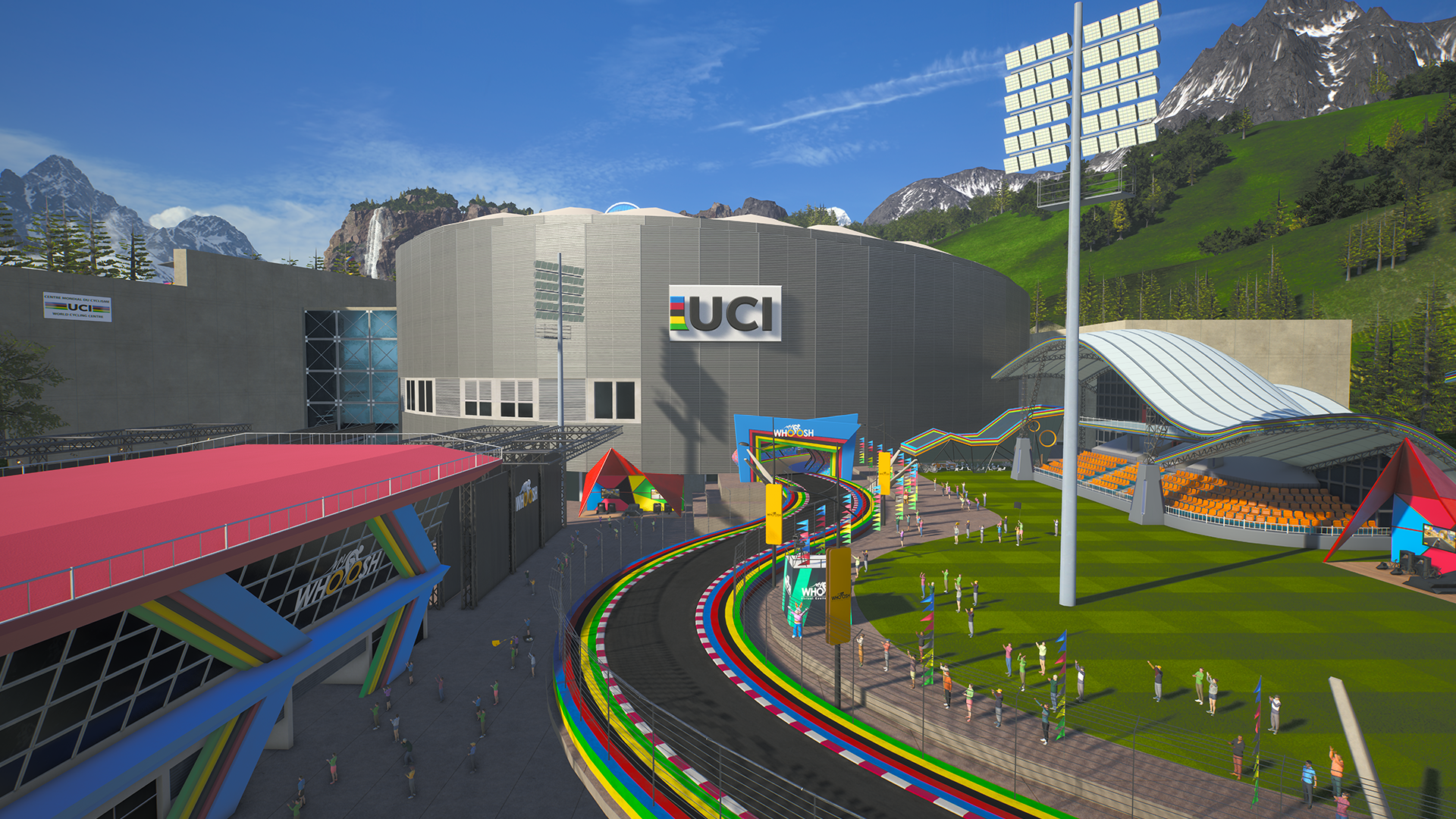
As indoor cycling has grown in popularity, a number of myths and perceptions have grown around it – chief amongst them is the idea that riding on an indoor cycling trainer provides a higher quality workout than pedalling outside but that it's also harder. So, are either of these assumptions actually true? The good news is that some clever scientists have looked into this for us.
First off is the research conducted by Mieras et al. (2014), which provides some intriguing insights. Subjects had to complete a 40km ride at a typical training ride intensity on both an indoor trainer and outside before the results were compared.
The researchers observed that cyclists generated higher power outputs and experienced increased heart rates during outdoor sessions compared to indoor ones, despite similar levels of perceived exertion. It was hypothesised that participants would have a lower rate of perceived exertion (RPE) and more dissociative thoughts because of the distractions of riding outdoors, more so than the non-stimulating indoor environment.
Another study confirmed that cycling indoors can be a more challenging mental task compared to cycling outdoors. This was tested by Slapinskaite et.al (2016) who had 13 participants cycle until they chose to stop, reporting changes in their thoughts.
They found that participants in their study tended to cycle for shorter durations indoors, potentially due to the tendency to be more easily distracted and more internally focused on how their body felt.
The indoor environment may limit the variety of external distractions that help occupy the mind and ease the mental load when riding outside, which seems to make the experience of cycling indoors more taxing and make riders less able to maintain the physical effort required.
Interestingly, though, both of these studies took place before the widespread introduction of indoor cycling apps such as MyWhoosh, so the sophistication, distractions and mental stimuli of indoor training has clearly changed significantly since.
While the most popular apps use highly engaging virtual environments to allow cyclists to ride and race with other cyclists around the world, engage in bespoke training sessions and closely replicate riding outdoors, they aren't virtual reality (VR) cycling applications per se.
Scientists, though, have looked at true VR cycling and it doesn't take a great deal of extrapolation to surmise that their positive findings could also be applied to MyWhoosh and the like.
One of the first studies to examine cycling in a virtual reality world, or as they called it exergaming, was presented at the 2018 Annual Congress of the European College of Sport Science.
The researchers, led by exercise physiologist Matthew Farrow, tried to establish if mean power output and enjoyment of high-intensity interval training (HIIT) were enhanced by virtual reality.
Using different conditions, including racing against previous best performances ,the researchers found that when participants can visualise and race against their previous personal best their mean power output was three percent higher.
They also found that virtual reality cycling was more exciting, satisfying and pleasurable than riding indoors without the VR, and concluded that using VR for indoor training might distract from sensations of fatigue and allow cyclists to perform at higher intensities without any physiological penalty.

And bringing us right up to date, a 2024 study led by Jacek Polechoński, associate professor at The Jerzy Kukuczka Academy of Physical Education in Katowice, Poland showed that cycling in a virtual reality world provided greater pleasure and ride satisfaction than cycling outside – a result that surprised the researchers.
Riders using the virtual reality world experienced higher levels of flow, a sought-after experience in sport where you are ‘in the moment’ and your skill and physical abilities meet the demands placed upon them.
Researchers concluded that the pleasurable experience of virtual reality cycling could encourage cyclists to train more frequently. Thanks to virtual reality, indoor cycling sessions are no longer boring is out the window, and the distraction of gaming can even reduce your perception of exertion, so hard sessions feel easier.
It’s not all in the mind
It’s easy to understand how focusing on a competitor in a virtual reality world can make a session go faster and feel more pleasurable, but there are very real-world reasons why cycling indoors is harder.
It's getting hot in here
Skin temperature is lower during outside riding than it is when cycling indoors. The movement of your body through the air, outside temperature and a breeze all cool your body and, importantly, help you to feel cool, dry and comfortable.
Indoors, it is a different story as there is little or no air movement to disperse sweat and heat from the surface of your skin. It is well established that increased body core temperature is associated with a decrease in exercise performance, so taking steps to keep your body cool through the use of fans for air cooling is important.
Even if it doesn’t change your body temperature, having the fan directed towards your face will help you feel more comfortable, as this area of the body has the highest sensitivity to heat.

Comfort in a static position
Riding a stationary bike indoors can feel quite different from cycling outside; you might find it less relaxing, and you may even use your legs differently. According to a 2016 study by Jared Joerger from the University of Nevada, cycling indoors at high intensities tends to engage the large muscle at the back of the thigh more than cycling outdoors does, likely because of how you interact with your surroundings in each setting, for example balancing your bike, absorbing road vibrations or getting in and out of the saddle.
This means that while your overall muscle effort might stay similar, the way specific muscles work could change depending on whether you are indoors or outdoors.
Similarly, in 2023 Jorge Virviescas, from the University of the Andes in Colombia, found that cycling outside, especially on uneven ground, leads to different joint movements and muscle use compared to indoor cycling.
There are now several smart trainers that offer more realistic rider movement, which can help your indoor training feel more like outdoor training. Allowing the bike some sway and movement can help ease stiffness and prevent saddle sores that form from long hours sitting on the indoor trainer.
Consistent quality
Indoor cycling poses distinct challenges compared to outdoor rides; most cyclists today enjoy a mix of indoor and outdoor training and use both methods to develop their fitness.
Indoor training certainly gives more fitness benefits per minute of your training session, as there are no traffic lights to stop at or hills to descend, so each pedal stroke counts. Without variables such as wind, terrain or temperature, it is easier to consistently measure your performance with like-for-like fitness tests.
For now, we can say indoor training is different, not necessarily harder or better, and there are strategies you can use, such as fan cooling, dynamic trainers and virtual reality platforms to make indoor cycling feel more comfortable and increase its benefits even more.







